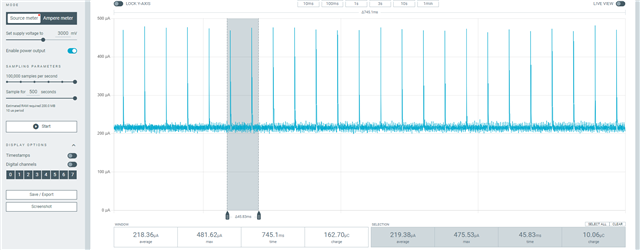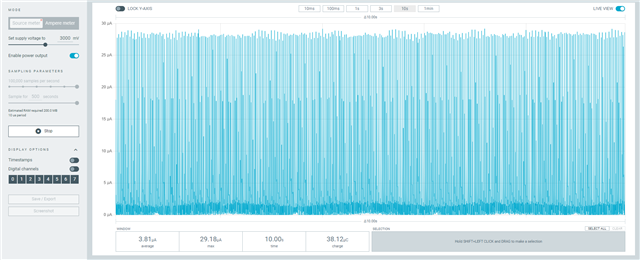Hi, I developed a solution using the pwm_nrf5_sw.
The accuracy is good enough, and I tested the power consumption using the PPK2 kit.
The average consumption is around 200uA, but the maximum consumption goes up to 480uA.
My question here is, should I ignore the maximum consumption and just focus on the average?
I added the consumption graph below.




